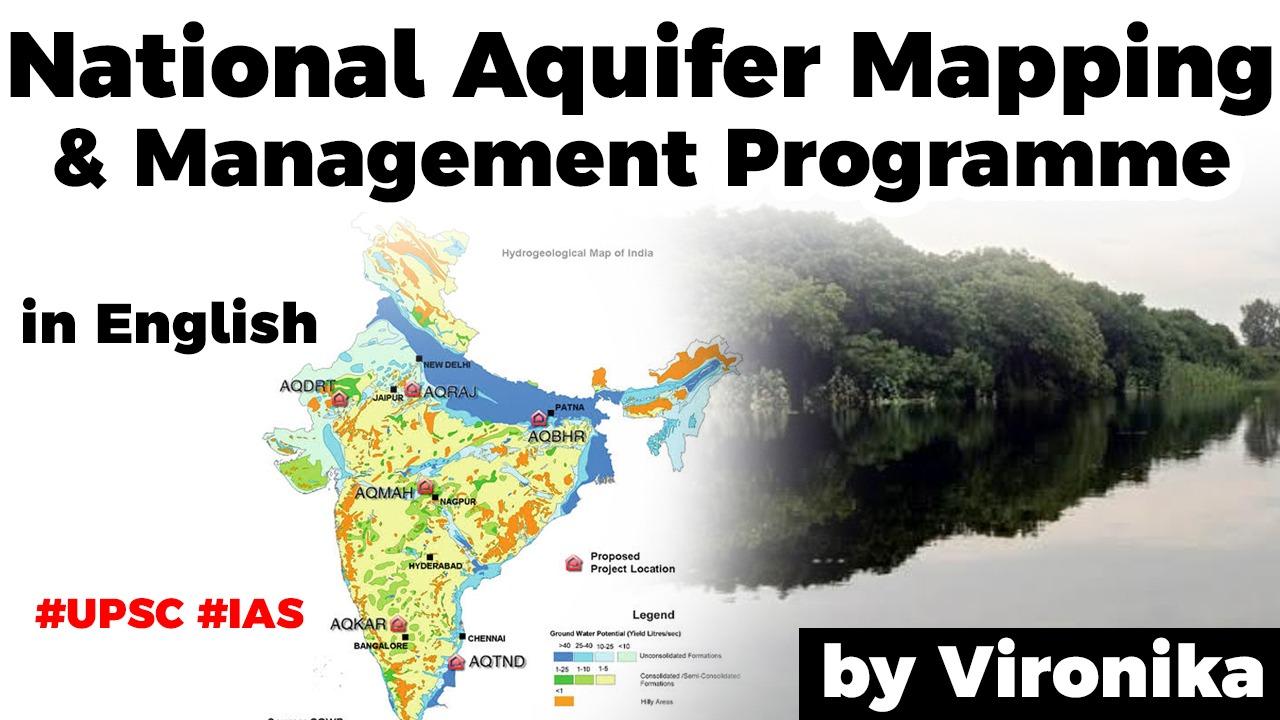Table of Contents
NAQUIM
- Water being a State subject, initiatives on water management including conservation and artificial recharge to ground water in the Country is primarily States’ responsibility.
- The NAQUIM is one such initiative of the Ministry of Jal Shakti for mapping and managing the entire aquifer systems in the country.
Highlights of the mapping
Central Ground Water Board
- C G W B has been e n t ru s t e d w ith th e re s p o n s ib ilitie s o f d e v e lo p in g & disseminating technologies, monitoring national policies for the scientific and sustainable development and management of India’s g ro u n d w a te r re s o u r c e s .
- The NAQUIM is an initiative of the Ministry of Water Resources for mapping and managing the entire aquifer systems in the country.
- It maintains the Hydrological Map of India.
- It aims:
- to identify and map aquifers at the micro-level,
- to quantify the available groundwater resources, and
- to propose plans appropriate to the scale of demand and aquifer characteristics, and institutional arrangements for participatory management.
Stages of the programme
- Collection, compilation and analysis
- Scientific investigations.
- Integration of data
- Various supply and demand side interventions
Water Conservation

Traditional ways
- Women’s Role
- Building water bodies
- Cleaning and Maintenance
- Performance of dances and songs
- Performance of water rituals
- Sacred aspect
- Tribal Practices
- Heritage knowledge
- A major water crisis is being faced by India, where 100 million people are on the frontlines of a nationwide water crisis and many major cities facing an acute water shortage.
- The situation will worsen as United Nations and Niti Ayog reports say that the demand for water will reach twice the available supply, and 40 percent of India’s population will not have access to clean drinking water by 2030.
- Conservation Of Water Bodies
- Since Independence Government Has Taken Controle Over THe Water Bodies And Water Supply
- With Colonial Mind Set Athuorties Move Further And Further Away In THe Qwest Of Water Supply Emphasing More On Network, Infrastructure And Construction
- Sufficient polices and acts for protection like Water Conservation Act 1974 have been enacted for protection and restoration of waterbodies
- Realising the seriousness of the problem confronting waterbodies, the Centre had launched the Repair, Renovation and Restoration of Water Bodies’ scheme in 2005 with the objectives of comprehensive improvement and restoration of traditional waterbodies.
- Ministry of Environment and Forests notified the Wetlands (Conservation and Management) Rules, 2010 to ensure better conservation and management and to prevent degradation of existing wetlands in
- Urban planning needs to be engaged more critically with the city’s terrain, along with propagation of knowledge about the local history of lakes, meaningful community engagement and ownership of waterbodies.
- Waterbodies being an important source of water, their protection through community management and the need of a comprehensive act for the protection of urban waterbodies.
Latest Burning Issues | Free PDF























 WhatsApp
WhatsApp